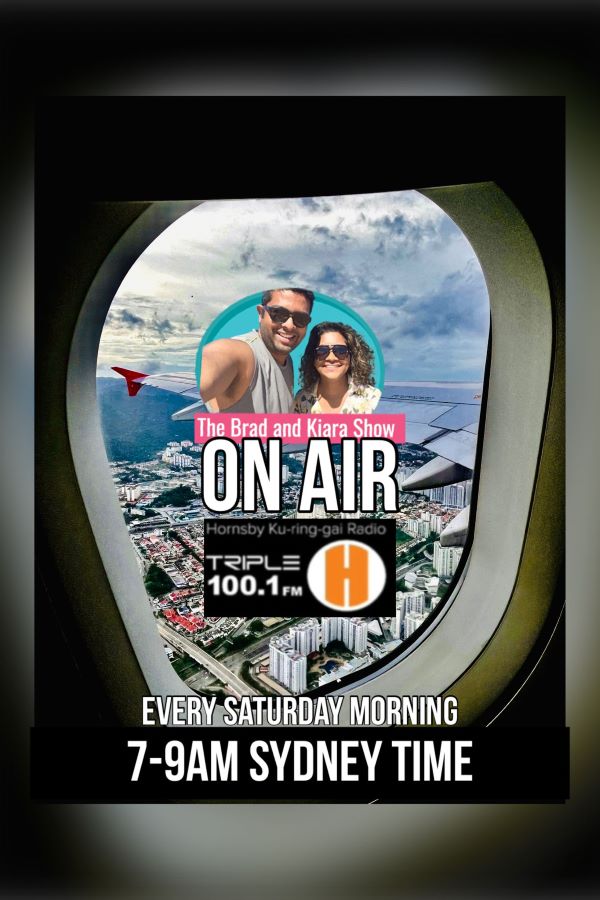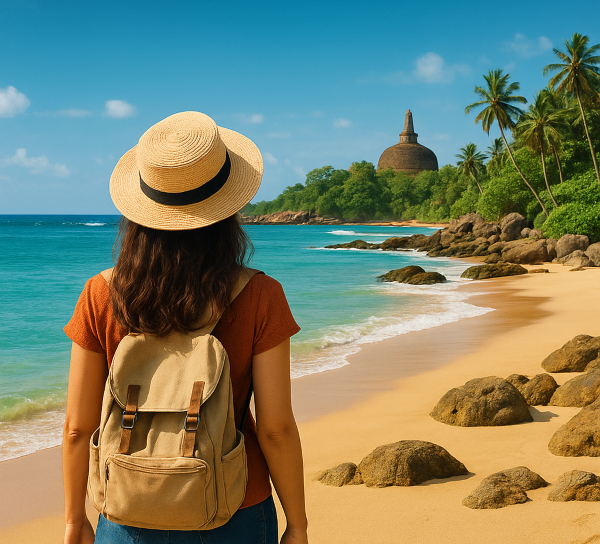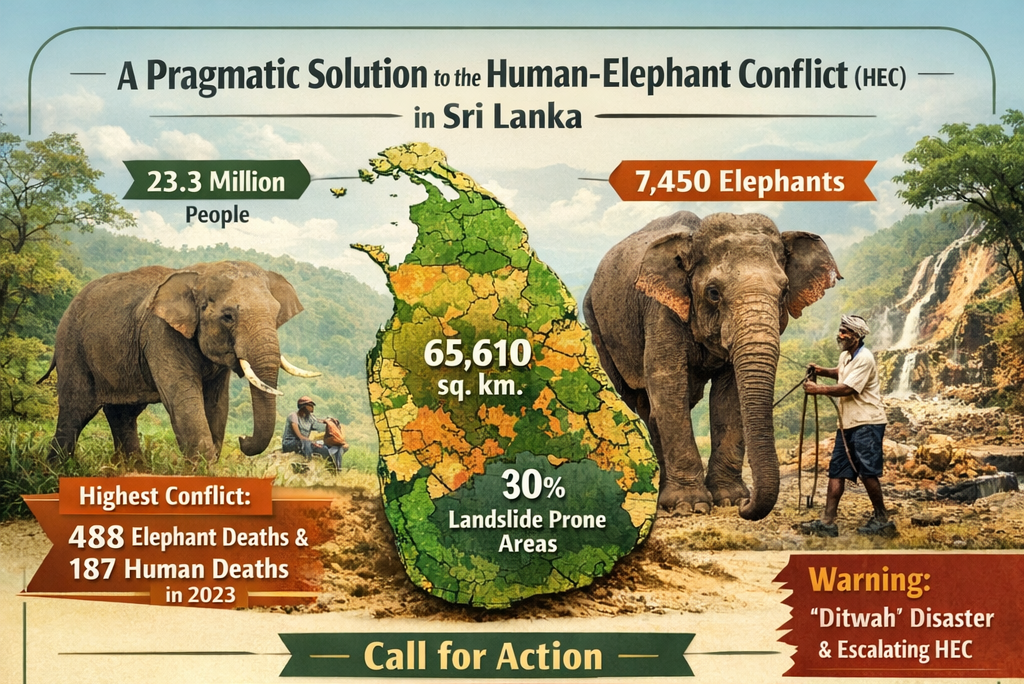I flew to Sri Lanka for £177… and you can too
Source : thetimes
Why spend 11 hours flying direct when you can do it in 100 hours instead? One writer got bonus stopovers in Istanbul and Dubai before arriving in Colombo
y favourite Ian Fleming book isn’t Casino Royale; it’s Thrilling Cities. In 1959 Fleming’s editor at The Sunday Times asked the 007 author to spend a few days in each of the world’s great cities while travelling aboard the first jet aircraft. Fleming purchased “a round-the-world-suit with concealed money pockets” and boarded a de Havilland Comet, bound for Beirut, Bahrain, Delhi and more. His decadent travel diary coloured prim postwar Britain with a racy exoticism.
Today another jet-age innovation has democratised intercontinental travel. The proliferation of low-cost airlines in Europe, Asia and the Middle East — Pegasus, Air Arabia and IndiGo among them — have fused into a Eurasian aviation network. Those happy to fly like Fleming — taking leisurely four-hour hops — could, for example, reach Bangkok from the UK via Gdansk and Stockholm for £173, using Ryanair, Wizz Air and Norse Atlantic; or reach Singapore with a full day exploring Athens on the way for £194.
In an attempt to be a budget Bond I’ve set my sights on Sri Lanka, via a £177 experiential hopscotch stopping in Istanbul and Dubai en route — a 100-hour journey, as opposed to the 11-hour direct flight. My intention is to save money and explore thrilling cities I would otherwise fly over, lodging at honestly priced hotels on the way to a destination that I’m longing to visit, while reducing jet lag and avoiding the discomfort of a long flight.
Culture and a hammam in Istanbul
I start with a 10.45am Pegasus flight from Stansted to Istanbul, priced from £46 in spring and booked five weeks in advance. I arrive at my hotel — Hammamhane, in the Cukurcuma neighbourhood — in the evening, after a lengthy airport transfer (one issue in a city of 16 million people). Here, in a historic building, are boho suites with terraces, a short walk from the Pera Palace, Fleming’s preferred hotel.
Hammamhane’s USP is its restored steam bath next door, dating from 1831. During my two-hour treatment there a succession of no-nonsense Turkish women pull me from my Ottoman lounger to exfoliate, stretch then bake me on a hot marble plinth, with restorative breaks for hibiscus tea. With this sultanic epiphany I feel reborn (B&B doubles from £74; hammamhane.com).
The next morning I experience Istanbul’s latest transport project through its Balat neighbourhood of teashops and fig trees — modern trams (50p per ride) now glide silently beside the Golden Horn, the scimitar-shaped waterway that slices the city’s European half in two. In this former backwater, ship chandlers and borek pastry kiosks trade alongside yoga studios and smoothie stands; ancient meets modern and east meets west, stirring the old Istanbul cliché like a glass of Turkish tea.
Then at sunset I navigate towards my Pegasus night flight to Dubai, departing from Sabiha Gokcen airport, on the Asian side of Istanbul (from £54). My 50p ferry ride on the Golden Horn from Kabatas to Kadikoy slays any other commute, puttering across the inky Bosphorus past some key historic sights: Topkapi Palace, the Orient Express terminus at Sirkeci and the Hagia Sophia, which was the world’s largest cathedral for almost 1,000 years.
A stop in Dubai next
I land in the UAE amid a sandstorm after a four-hour economy-seat sleep. Headlights from a hundred Ubers illuminate the night. Despite my pre-dawn arrival at Vida Dubai Mall, one of the city’s newest hotels, I’m welcome to use the facilities while waiting to check in to my room at 2pm. There’s a 24-hour gym, free bikes and a Hollywood-standard swimming pool overlooking a Blade Runner skyline (room-only doubles from £111; vidahotels.com).
• Explore our full guide to Sri Lanka
The hotel is connected to the Dubai Mall, whose 1,200 stores are a Rosetta Stone of commercialism where shoppers can rinse Bloomingdale’s, Galeries Lafayette and Baby Dior and visitors with reduced mobility are escorted in an electric buggy shaped like a vintage Rolls-Royce. I’m on a tight budget so I only purchase a tragic sandwich from Boots.
Dubai Mall is also the start point for the emirate’s new On & Off Bus. No doubt Fleming would scorn it as a contemptible charabanc, though he might appreciate its voyeuristic qualities, as passengers get to peek into the palaces and playgrounds of this thrilling city. Today I’m the only passenger — like an Emirati billionaire with my own private wheels (day ticket £7; rta.ae).
We pass the Museum of the Future, which is big on AI, a sector considered so important that golden visas are dished out to attract industry boffins to Dubai. And I hop off in the north of the city in the Al Fahidi neighbourhood, which hosts art pop-ups in 19th-century mansions cooled by traditional barjeel wind towers — sadly, these are forgotten inventions in an emirate that uses up to 50 per cent of its electricity consumption for air conditioning.
• 13 of the best Sri Lanka tours
Rural adventure in Sri Lanka
The next morning I board Air Arabia’s four-hour morning hop from Dubai to Colombo, the Sri Lankan capital — the final leg of my low-cost journey to the tropics (from £71). Unlike most British travellers arriving here, I’m not jet-lagged, so I set off immediately with Videsh Ambegoda, an expert ornithologist and wildlife guide. For two hours we drive a winding route under nodding palms into cloud-covered forest, passing watermelon kiosks, corn-on-the-cob grillers and cricket-bat polishers.
Then Ambegoda throws me into a river — or, rather, we go wild swimming in wetsuits down the Kelani. This 90-mile-long waterway provides about 80 per cent of Colombo’s drinking water. Arjun trees dangle leaves into it, mist fluffs above the surface like cotton wool and blue-eared kingfishers zing past like iridescent darts. The only shock comes from the submerged water buffaloes, which pop up to honk steam into your face.
The following morning Ambegoda and I wake early at Moksha, our rainforest boutique hotel, to go birdwatching (B&B doubles from £84; moksha.hotel.lk). We begin beside a 300ft-long rope bridge, worthy of Indiana Jones and which schoolchildren dressed in starched white uniforms are crossing. The rainforest biome blooms like a terrarium gone feral with supersize Biophytum sensitivum plants and tree ferns. Ambegoda points out endemic orange-billed babblers in a mango tree; a rare green-billed coucal hops around a pepper plant. There are also coffee bushes and tea shrubs.
Back at the hotel I cool off in the natural pool while a downpour turns the surface into a bubble bath. After a lunch of bright orange dal, Ambegoda and I drive east and inland into tea country. The area is like a tropical Switzerland, and alpine flora surrounds a DayGlo Hindu temple and there are switchbacks shrouded in mist. Tea pickers pluck away on precipitous estates (48-hour tour from £86pp; bluelankatours.com).
A final stop in tea country
My final destination is the hill station of Nuwara Eliya. Encircled by rain and tea, it became a hydrangea-lined sanctuary for Colombo’s colonial elite — the country’s answer to Darjeeling or “snooty” Ooty in India. I’m deposited at Sri Lanka’s oldest post office, which features faded portraits of Queen Elizabeth II and her father, the former king and emperor of Ceylon, George VI. The town is a postcard from the past.
My hotel here, St Andrew’s, harks back to the British-run past, with vintage ledgers listing 1920s expenditures: “beef, tinned sardines, sundries”. Even in summer, at 1,868m (6,129ft), a roaring fire keeps toddy-drinking guests toasty (room-only doubles from £94; jetwinghotels.com). Sadly I only have time to sample a single stage of Nuwara Eliya’s newest attraction, the Pekoe Trail hiking route, which loops for more than 180 miles through tea estates interspersed with time-honoured accommodation — another time. This is the main drawback of flight hopping: less time in your final destination.
I take the morning train from Nuwara Eliya to Colombo. We snake through foggy plantations before the jungle envelopes the line like an emerald tunnel. The final section is similar to riding a slow rollercoaster through a sauna, before I disembark into the delicious maelstrom of Colombo Fort station for a lunch of curry-filled pancakes.
If anything, my three-day journey from London to Sri Lanka was too fast, not too slow, though I’ve made an economical holiday of it. The six-night trip cost about £900, including return flights, transfers, hotels and meals. Flying directly from Heathrow costs about the same, but I have enjoyed a far greater cultural adventure while avoiding a red-eye flight.
“Going around the world too quickly is like attending a series of dinner parties and leaving with the soup,” Fleming wrote after his flying trip. The author flew on from the subcontinent to spend a few days each in Hong Kong, Tokyo, Honolulu, Los Angeles and Chicago. I have a long slog back home to Luton. Hold the Taittinger, James.
Tristan Rutherford was a guest of Dubai Tourism (visitdubai.com), the Sri Lanka National Tourist Board (srilanka.travel) and Pegasus Airlines (flypgs.com)
More tips on finding flight-hopping bargains
By Tristan Rutherford
Skyscanner is a good bet for finding the cheapest route to a destination. Simply click “one-way flights” and toggle for “flexible dates” to see the cheapest fares for the coming 12 months (skyscanner.net). Purchase individual legs at the website of each airline, rather than a ticket for the entire journey. Few stopover countries require a visa en route east.
Other flight-comparison sites, such as Momondo.co.uk and Kiwi.com, can also turn up epic deals, especially to Asia, for travellers who can be flexible.
Skyscanner has a £202 one-way flight from London to Bali on January 22 with stops in Athens, Delhi and the Indian temple city of Bhubaneswar. The trip takes 40 hours, but I would advise doing it in 60 hours for a more leisurely sightseeing tour. Granted, you’ll spend money on hotels and taxis, but the cheapest one-stop flights, using the Gulf airlines, cost about £400, so you should still save.
Because flight hopping to Asia relies on budget airlines, regional UK departures seldom cost extra. For example, a Manchester-Bangkok hop on March 15 costs £163 one way with Ryanair and Norse Atlantic, including a 21-hour stop in Oslo. The cheapest direct flights would cost about £100 more.
Another bargain at time of publication is Luton to Kenya on December 3 for £191 one way, with stops in Istanbul and Riyadh, booking via the websites of Ryanair and Flynas. A direct flight with Kenya Airways would be £400.
Alternatively, there’s Gatwick to Goa on February 27 for £147 one way, via Cyprus, Abu Dhabi and Mumbai, with Wizz Air and IndiGo; The journey takes a minimum of 46 hours.
Granted, flight hopping has its downsides. Booking the cheapest flights means no seat allocations or luggage allowances. And if delays mean that you miss an onward connection operated by another airline it is likely to count you as a no-show, obliging you to purchase a new ticket at a last-minute price.
That said, I boarded each plane carrying a takeaway, a tablet loaded with films and a sense of optimism — you don’t need all the trimmings for a four-hour flight.




























